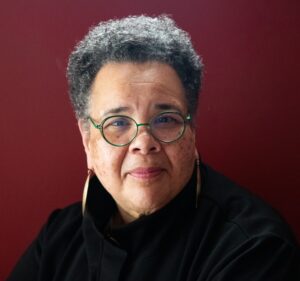
Winter Surprise to Bolster & Brighten
To listen to this blogpost, click here.
Gray.
The fog, thick and dreary, descended in late December. In early January, the artic blast assaulted with negative temperatures prolonged over consecutive days.
Unrelenting gray.
Consuming gray.
Days of gray have now turned into weeks of gray. Relief from ice and snow has come in the form of days of downpouring rains – with temperatures still below freezing. Today, the expected high is 36 degrees Fahrenheit, that feels like 32 degrees Fahrenheit, with continued dense fog and forecasted 80% chance of precipitation tomorrow. It has been a prolonged—too long—moment of melancholy—dull, grim, and bleak.
Then it happened... A few days ago I received a text from a beloved friend that read,
Hi Lynne, I accidentally had a book sent to your house. It’s called (title of book). I’ve read it before, a borrow from the library. It’s pretty … wild. But you may like it. Hope you like it. [Red Heart Emoji]
Surprise!
Suddenly, the gloom was challenged by a bit of intrigue. A surprise book, an accidental book, was coming to my door. I needed a surprise book, especially if it was “wild.” Sure enough, that day the Amazon delivery person dropped the book on my porch. Immediately, I started reading. Immediately, I discovered a new author. Immediately, my spirits lifted.
There is something about surprise--when it is pleasant--that combats the dreariness of the season. A surprise can chase the blues away or at least make the blues melodic and survivable.
Teaching in the dead of winter can sometimes mean teaching in prolonged frigid weather. Winter can be both real and metaphoric to describe our environments. We know that our bodies, minds, spirits react with and are affected by light, temperature, barometric pressure, and precipitations. Being mindful of your own mood and the moods of your students is part of classroom management and good teaching practices. Consider, when the moods are gray, planning a surprise.
Too often planned surprises in courses are punitive—like surprise quizzes or surprise tests. That is not what I am talking about. I am talking about surprises that delight, intrigue, and bring some welcome relief from the long, too long, winter.
When I received the marvelous book surprise from my friend, I was reminded of the ways I would attend to my own blue moods while teaching. I recalled some of the ways I would make gestures to bolster my students’ moods in the middle of the winter. I would, for them and for me, change the tempo of the course, introduce something or someone unexpected, and nurture a lighter-hearted atmosphere. Somehow, and most times, these gestures of care shifted us for the better.
Here are a few examples of ways I went about changing pace and surprising my students:
- Brought a basket of chocolate to class to be passed; enough chocolate for all to have much
- Planned a spontaneous change of venue - moved the class session to the library, to the gym, to a science lab, or to a lobby of the building to sit on couches
- Invited a surprise guest lecturer; lecturer was the author of the book being read, former student who had done well in the course, local celebrity, Dean, Provost or President to discuss the topic of the course
- Planned a potluck or moved to the refectory for class—shared a meal during the class
- On a few occasions I brought my collie dog named Max to class. He was a warm and gentle giant who, as students arrived in the room, happily greeted those who wanted to play, then Max laid down at the door and slept until break when he received more pets and cuddles. Max’s presence lifted many spirits of students, and their glee made me smile.
- On several occasions, I thought of a class session as being like the “Free Parking” space in a monopoly game. Rather than what was planned for that session, I invited students to gather up their thoughts, questions, concerns, and we discussed whatever they wanted to discuss. Anything that came up! My conversation prompt would be—where are you in this learning? What have you learned thus far?
Or
- I would suspend the planned session and gather students around (change in seating pattern) and ask them so what? /now what? questions. I would ask, how do you make meaning of this newly glimpsed perspective or new concepts? How does this affect your thinking, being, doing? What does your community, family, tribe think of what we are discussing? Is any of this valuable to your community?
- Brought art supplies to class and invited students, rather than taking notes, to draw, color, sketch, or work with play dough throughout the lecture
- Shifted to a skill-based lesson. What skills have you noticed that students do not possess, but you need them to be able to do? For example, good student skills of reading comprehension, writing skills, questioning skills.
- Showed a film complete with popcorn, soda, and candies
- Read aloud children’s books, poetry, or short stories
You get the idea. Please be mindful that I am not saying for you to do what I did. Your context is different than mine and your teaching landscape is not mine. My point is to encourage and invite you to be aware of your own wintertime mood and the wintertime mood of your students, then adjust, modify – meet your students where they are, as they are.
In the wintertime, sometimes the gloominess is better survived with a change of pace, with a gesture of care and warmth, with an acknowledgement that we need to be with one another but in gentler ways. If/when you can brighten the spirits of your students, your own spirit will be glad.
Spring arrives on Tuesday, March 19, 2024, at 11:06 p.m. EDT. We teach in hope.
Leave a Reply